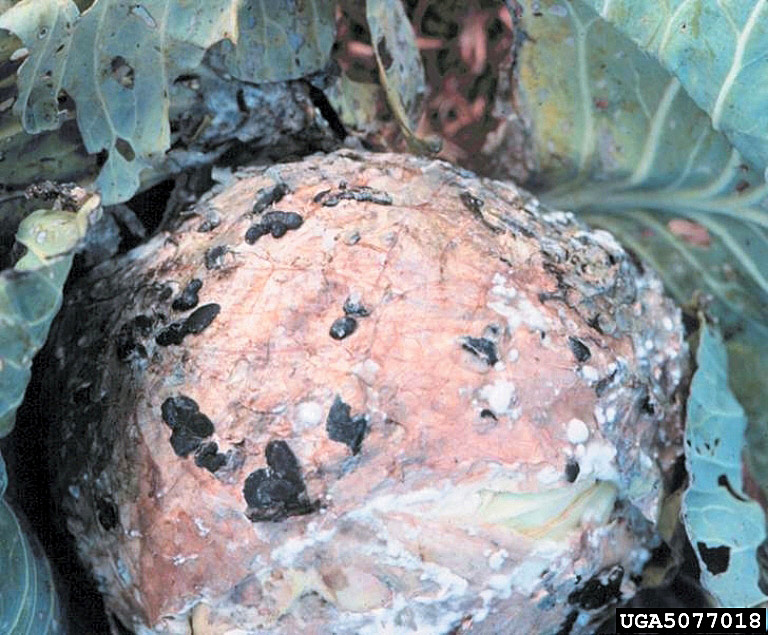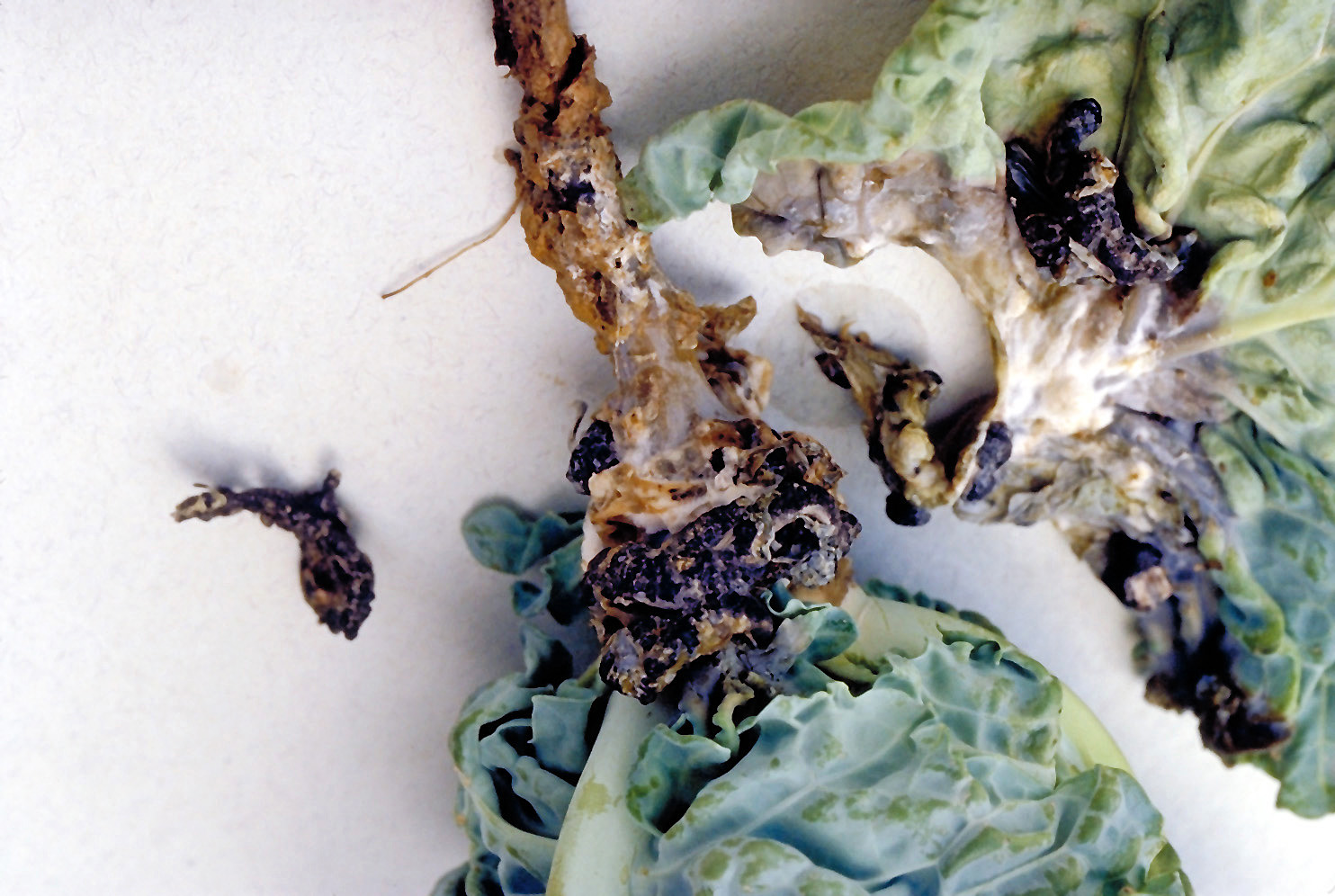White Mold
Return to diseases
White mold (Sclerotinia sclerotiorum) affects the majority of cole vegetables, but is found most often on cabbage in Kentucky. On cabbage, symptoms occur first on tissues near the soil line, and generally appear as a soft, wet rot that is light brown in color. The necrotic area will extend to the head as the fungus invades these tissues, resulting in extensive soft-rotting. Under humid conditions, a profuse white mycelium may be present on infected plant parts, along with numerous black-colored resting structures (sclerotia) that are irregular in shape and size. Transplants of cole crops are occasionally attacked by S. sclerotiorum. Infection occurs usually on stems at the soil line, resulting in a soft rot and eventual collapse of seedlings. Fungal growth (mycelium) is often present, along with sclerotia, on infected plant parts.

Wet rot and fungal growth (mycelium and sclerotia) caused by Sclerotinia on cabbage head
(Photo: David Langston, University of Georiga, Bugwood.org)

White mold on lower stem of cabbage
(Photo: Cheryl Kaiser, University of Kentucky)
Management:
- Crop Rotation.
- Deep-turning of cole-crop residues after harvest.
- Weed control.
- Fungicides.
